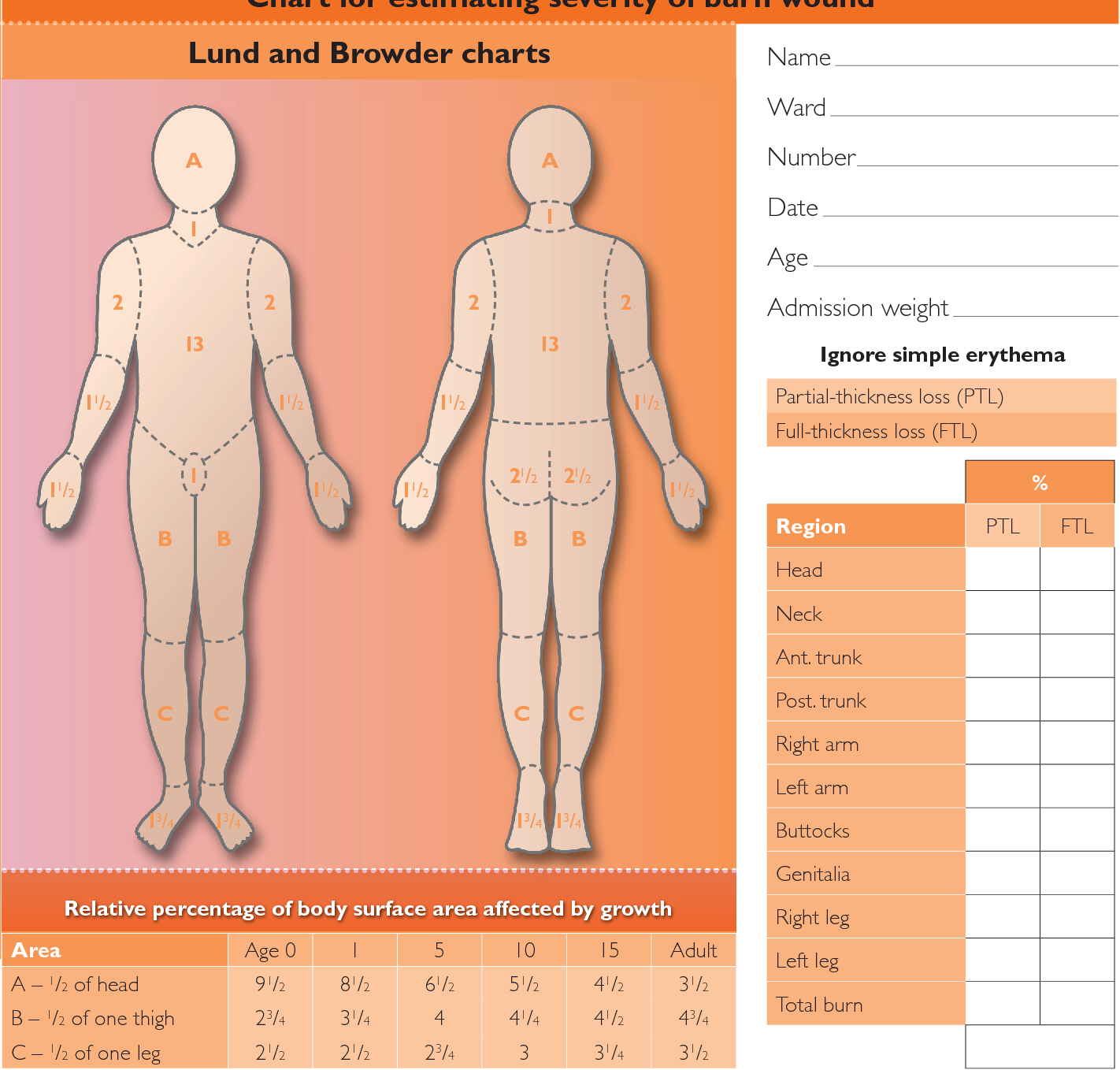Body Surface Area Burn Chart: Accurate Assessment for Effective Treatment
How is total body surface area (TBSA) assessed in burn patients. What are the different methods used to calculate burn surface area. Why is accurate TBSA assessment crucial for burn management. Which technique is considered the gold standard for burn area estimation. How can digital tools improve the accuracy of burn size calculations.
The Importance of Accurate Burn Surface Area Assessment
Determining the total body surface area (TBSA) affected by burns is a critical step in managing burn injuries. Accurate assessment of burn size directly impacts treatment decisions, fluid resuscitation, and overall patient prognosis. Healthcare professionals use various methods to estimate TBSA, ranging from simple techniques to more complex charts and digital tools.
Understanding the Concept of Total Body Surface Area (TBSA)
TBSA refers to the percentage of a person’s skin that has been damaged by burns. It’s a crucial metric used to classify burn severity and guide treatment protocols. For adults, a burn covering more than 20% TBSA is considered severe, while for children, the threshold is lower at 10% TBSA.
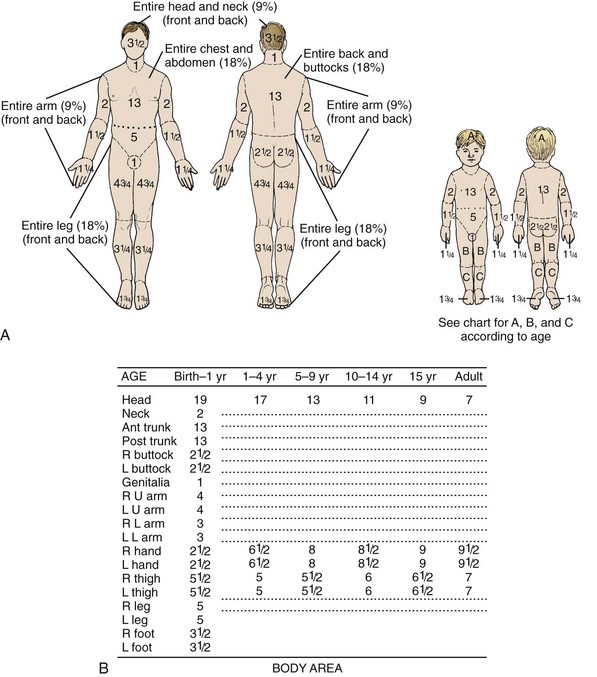
Why is TBSA assessment so important?
- Guides fluid resuscitation protocols
- Helps determine the need for specialized burn center care
- Informs decisions about wound management and skin grafting
- Assists in predicting patient outcomes and recovery time
The Palm Method: A Quick Estimate for Small Burns
One of the simplest techniques for estimating burn size is the palm method. This approach uses the patient’s palm (including fingers) as a reference, assuming it represents approximately 1% of their total body surface area.
How to use the palm method:
- Visualize the patient’s palm and fingers
- Compare the burn area to the size of the patient’s palm
- Estimate how many “palms” would cover the burned area
- Each palm represents roughly 1% TBSA
While quick and easy to use, the palm method is most suitable for smaller burns and should not be relied upon for extensive injuries.
The Rule of Nines: A Rapid Assessment Tool
The Wallace Rule of Nines is a more comprehensive method for estimating TBSA in adults. This technique divides the body into sections, each representing 9% (or a multiple of 9%) of the total surface area.
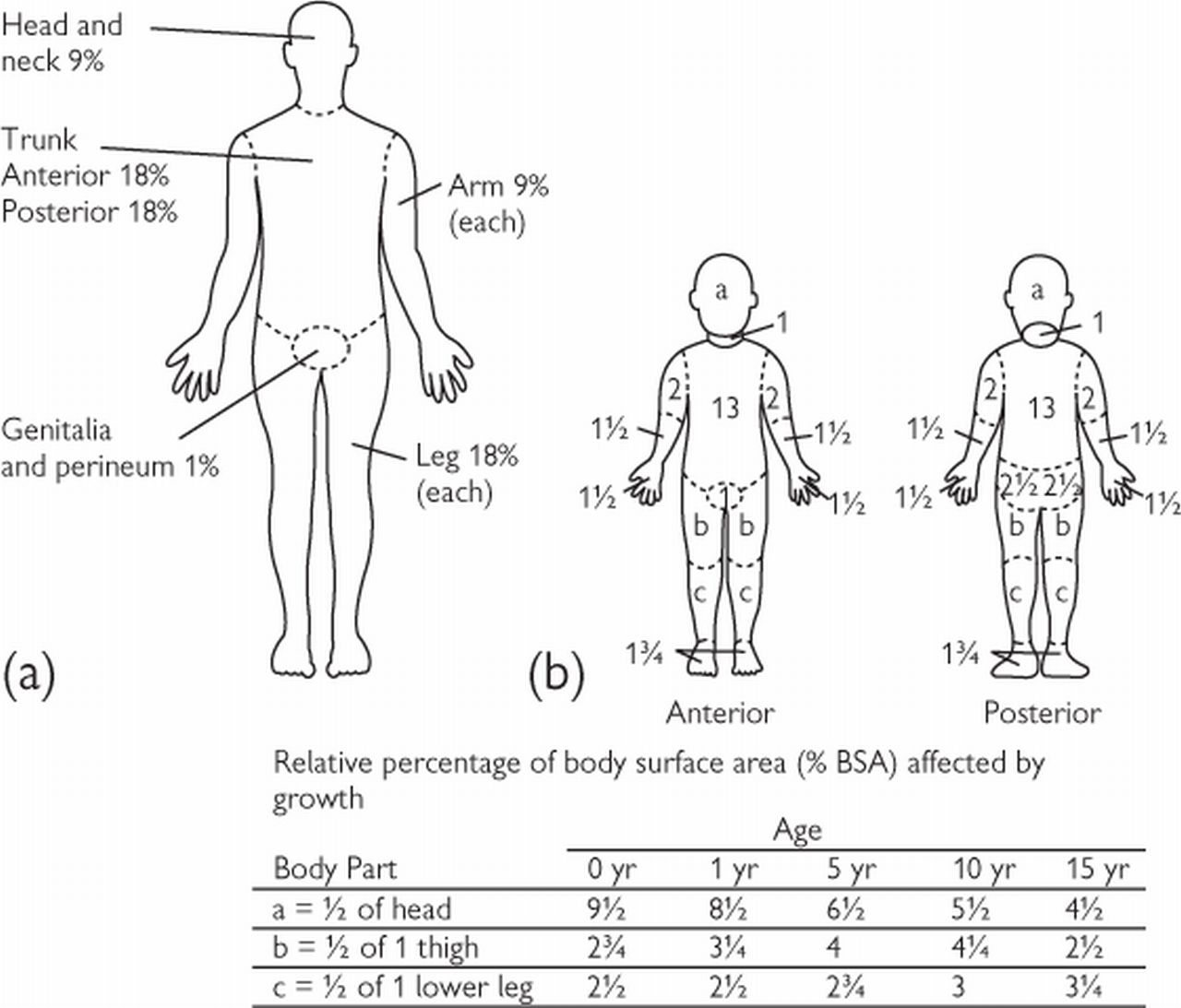
Body region percentages according to the Rule of Nines:
- Head and neck: 9%
- Each arm: 9%
- Chest: 18%
- Back: 18%
- Each leg: 18%
- Groin: 1%
While the Rule of Nines provides a quick estimate, it’s important to note that it’s less accurate for children and individuals with non-standard body proportions.
The Lund and Browder Chart: The Gold Standard in TBSA Assessment
Considered the most accurate method for estimating burn surface area, the Lund and Browder Chart accounts for age-related variations in body proportions. This makes it particularly valuable when assessing burns in children, whose body proportions differ significantly from adults.
Key features of the Lund and Browder Chart:
- Provides separate calculations for different age groups
- Offers more detailed body region subdivisions
- Accounts for the changing proportions of the head and legs as children grow
- Allows for more precise TBSA calculations
Healthcare professionals should be familiar with using this chart to ensure the most accurate TBSA assessments, especially in pediatric burn cases.
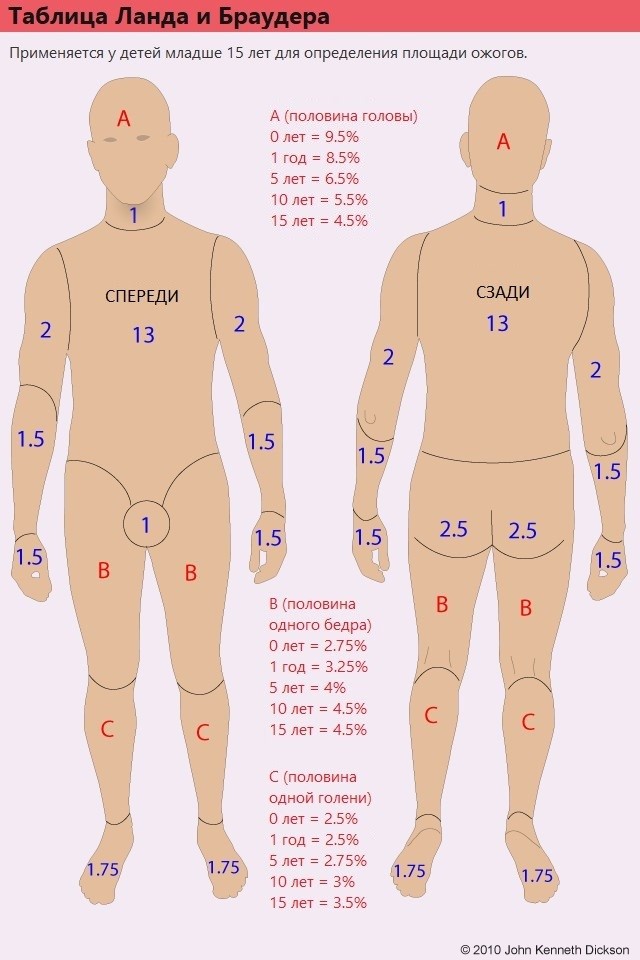
Digital Solutions: The Mersey Burns App
As technology advances, digital tools are becoming increasingly valuable in burn assessment. The Mersey Burns app is a CE-certified application designed to improve the accuracy and efficiency of TBSA calculations.
Benefits of using the Mersey Burns app:
- Allows for digital mapping of burn areas on a body diagram
- Automatically calculates TBSA percentages
- Provides fluid resuscitation recommendations based on TBSA
- Reduces the potential for human error in calculations
- Offers a standardized approach across different healthcare providers
While digital tools like the Mersey Burns app can enhance accuracy, they should be used in conjunction with clinical judgment and traditional assessment methods.
Common Pitfalls in Burn Surface Area Assessment
Despite the various methods available, accurately assessing burn surface area can be challenging. Healthcare providers should be aware of common pitfalls to ensure the most precise TBSA calculations possible.
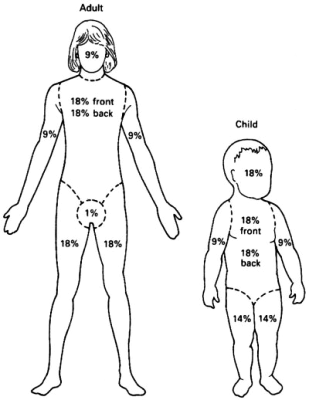
Factors that can lead to inaccurate TBSA estimates:
- Overestimation of patchy or irregularly shaped burns
- Failure to account for age-related body proportion differences
- Inconsistent assessment techniques among different healthcare providers
- Difficulty in assessing burns in anatomically complex areas (e.g., face, genitals)
- Inadequate consideration of burn depth in surface area calculations
To mitigate these issues, it’s crucial for burn care teams to receive regular training in TBSA assessment techniques and to use standardized tools and protocols.
The Impact of Accurate TBSA Assessment on Patient Care
The precision of burn surface area calculations has far-reaching implications for patient care and outcomes. Understanding these impacts underscores the importance of striving for the most accurate TBSA assessments possible.
How does accurate TBSA assessment influence burn management?
- Fluid Resuscitation: Precise TBSA calculations are crucial for determining the appropriate amount of fluid replacement, preventing both under-resuscitation and fluid overload.
- Nutritional Support: TBSA informs the calculation of increased caloric needs in burn patients, ensuring adequate nutritional support for healing.
- Wound Care Planning: Accurate assessment helps in planning appropriate dressing changes, topical treatments, and potential skin grafting procedures.
- Prognosis and Recovery Time: TBSA is a key factor in predicting patient outcomes, length of hospital stay, and potential complications.
- Triage Decisions: In mass casualty events, TBSA assessment aids in prioritizing patients for treatment and transfer to specialized burn centers.
Given these critical implications, healthcare providers must strive for the highest possible accuracy in TBSA calculations to optimize patient care and outcomes.

Innovative Approaches in Burn Surface Area Assessment
As medical technology advances, new methods for assessing burn surface area are emerging. These innovative approaches aim to improve accuracy, efficiency, and consistency in TBSA calculations.
Cutting-edge techniques in burn area assessment:
- 3D Scanning Technology: Using handheld 3D scanners to create precise digital models of burn wounds, allowing for more accurate surface area calculations.
- Artificial Intelligence (AI) Algorithms: Developing AI systems that can analyze digital images of burns to estimate TBSA with high accuracy.
- Thermal Imaging: Utilizing infrared cameras to detect and measure burn areas based on temperature differences in affected skin.
- Augmented Reality (AR) Applications: Creating AR tools that overlay burn area calculations onto real-time views of the patient, aiding in visual assessment.
- Bioelectrical Impedance Analysis: Exploring the use of electrical current to measure changes in skin conductivity associated with burn injuries.
While many of these technologies are still in development or early stages of implementation, they represent promising avenues for enhancing the precision of burn surface area assessments in the future.

Training and Education in Burn Surface Area Assessment
Accurate TBSA assessment requires not only the right tools but also well-trained healthcare professionals. Ongoing education and training are essential to ensure consistent and precise burn area calculations across different care settings.
Key components of effective TBSA assessment training:
- Theoretical Knowledge: Understanding the principles behind different TBSA calculation methods and their appropriate applications.
- Practical Skills: Hands-on training with mannequins or simulated burn scenarios to practice assessment techniques.
- Digital Tool Proficiency: Familiarization with digital apps and software used in burn assessment, such as the Mersey Burns app.
- Inter-rater Reliability Exercises: Regular practice sessions where multiple providers assess the same simulated burns to ensure consistency.
- Continuous Education: Staying updated on the latest research and guidelines in burn surface area assessment.
By prioritizing comprehensive training and education, healthcare institutions can significantly improve the accuracy and reliability of TBSA assessments, ultimately leading to better patient care and outcomes.
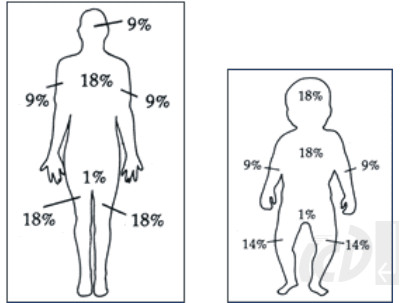
The Role of Multidisciplinary Collaboration in TBSA Assessment
Accurate burn surface area assessment often benefits from a collaborative approach involving various healthcare specialists. This multidisciplinary perspective can help overcome individual biases and provide a more comprehensive evaluation of complex burn cases.
Benefits of multidisciplinary collaboration in TBSA assessment:
- Diverse Expertise: Combining insights from emergency physicians, burn specialists, plastic surgeons, and wound care nurses.
- Improved Accuracy: Multiple assessments can be averaged or discussed to reach a consensus on TBSA.
- Comprehensive Care Planning: Collaborative assessment facilitates holistic treatment planning that addresses all aspects of burn care.
- Educational Opportunities: Less experienced team members can learn from seasoned professionals during collaborative assessments.
- Standardization of Practices: Regular collaboration helps establish consistent assessment protocols across different departments and shifts.
Encouraging a culture of collaboration and open communication among healthcare providers can significantly enhance the accuracy and effectiveness of burn surface area assessments.

Documenting and Communicating TBSA Assessments
Proper documentation and clear communication of burn surface area assessments are crucial for ensuring continuity of care and facilitating accurate treatment decisions. Standardized documentation practices help minimize errors and improve patient outcomes.
Best practices for documenting TBSA assessments:
- Use standardized burn diagrams or digital templates to visually represent affected areas.
- Clearly state the assessment method used (e.g., Rule of Nines, Lund and Browder Chart).
- Include detailed descriptions of burn locations, depths, and any unique characteristics.
- Document the date, time, and name of the healthcare provider performing the assessment.
- Note any challenges or uncertainties encountered during the assessment process.
- Record serial assessments to track changes in burn appearance and healing progress.
- Ensure that TBSA calculations and related treatment plans are easily accessible to all care team members.
By implementing robust documentation and communication practices, healthcare teams can enhance the overall quality and consistency of burn care, leading to improved patient outcomes and more efficient treatment processes.

Adapting TBSA Assessment for Special Populations
While standard TBSA assessment methods work well for many patients, certain populations require special considerations to ensure accurate calculations. Adapting assessment techniques for these groups is crucial for providing appropriate care.
Special populations requiring adapted TBSA assessment approaches:
- Infants and Young Children: Require age-specific charts due to different body proportions.
- Obese Individuals: May need adjustments to standard surface area calculations.
- Pregnant Women: Require consideration of the changing body shape and potential fetal implications.
- Elderly Patients: May have altered skin properties and body proportions affecting assessment.
- Patients with Pre-existing Skin Conditions: Conditions like psoriasis or vitiligo can complicate burn area assessment.
Healthcare providers should be trained in recognizing these special cases and applying appropriate modifications to their TBSA assessment techniques. This adaptability ensures that all patients receive accurate evaluations and tailored treatment plans, regardless of their unique physical characteristics or conditions.

As we continue to refine our approach to burn surface area assessment, the focus remains on improving accuracy, efficiency, and patient outcomes. By combining traditional methods with innovative technologies, fostering multidisciplinary collaboration, and adapting our techniques for diverse patient populations, we can enhance the quality of burn care and support better healing processes for individuals affected by burn injuries.
Assessment of burn surface area | Burns (OSH Surgery)
-
Cite Icon
Cite
-
Permissions
-
Share
Cite
Whitaker, Iain S. and others (eds), ‘Assessment of burn surface area’, in Iain S. Whitaker, Kayvan Shokrollahi, and William A. Dickson (eds), Burns (OSH Surgery), Oxford Specialist Handbooks in Surgery (
Oxford, 2019; online edn, Oxford Academic, 1 Mar. 2019), https://doi. org/10.1093/med/9780199699537.003.0009, accessed 3 July 2023.
org/10.1093/med/9780199699537.003.0009, accessed 3 July 2023.
Select Format
Select format.ris (Mendeley, Papers, Zotero).enw (EndNote).bibtex (BibTex).txt (Medlars, RefWorks)
Close
Navbar Search Filter
Oxford AcademicBurns (OSH Surgery)Oxford Specialist Handbooks in SurgeryDermatologySurgeryOxford Medicine OnlineBooksJournals
Mobile Enter search term
Close
Navbar Search Filter
Oxford AcademicBurns (OSH Surgery)Oxford Specialist Handbooks in SurgeryDermatologySurgeryOxford Medicine OnlineBooksJournals
Enter search term
Advanced Search
Abstract
Assessment of total body surface area of a burn injured patient is a crucial step in managing burn injury. The chapter describes a number of techniques from using the size of the patient’s palm as an estimate of 1% to the gold standard Lund and Browder Chart. Key caveats are explained, copies of the charts included as well as the use of the CE certified app Mersey Burns.
The chapter describes a number of techniques from using the size of the patient’s palm as an estimate of 1% to the gold standard Lund and Browder Chart. Key caveats are explained, copies of the charts included as well as the use of the CE certified app Mersey Burns.
Keywords:
burns assessment, TBSA, Lund & Browder, Wallace Rule of Nines, Mersey Burns
Subject
SurgeryDermatology
Series
Oxford Specialist Handbooks in Surgery
Collection:
Oxford Medicine Online
Disclaimer
Oxford University Press makes no representation, express or implied, that the drug dosages in this book are correct.
Readers must therefore always …
More
Oxford University Press makes no representation, express or implied, that the drug dosages in this book are correct.
Readers must therefore always check the product information and clinical procedures with the most up to date published product information and data sheets
provided by the manufacturers and the most recent codes of conduct and safety regulations. The authors and the publishers do not accept responsibility or
legal liability for any errors in the text or for the misuse or misapplication of material in this work. Except where otherwise stated, drug dosages
and recommendations are for the non-pregnant adult who is not breastfeeding.
You do not currently have access to this chapter.
Sign in
Get help with access
Get help with access
Institutional access
Access to content on Oxford Academic is often provided through institutional subscriptions and purchases. If you are a member of an institution with an active account, you may be able to access content in one of the following ways:
IP based access
Typically, access is provided across an institutional network to a range of IP addresses. This authentication occurs automatically, and it is not possible to sign out of an IP authenticated account.
This authentication occurs automatically, and it is not possible to sign out of an IP authenticated account.
Sign in through your institution
Choose this option to get remote access when outside your institution. Shibboleth / Open Athens technology is used to provide single sign-on between your institution’s website and Oxford Academic.
- Click Sign in through your institution.
- Select your institution from the list provided, which will take you to your institution’s website to sign in.
- When on the institution site, please use the credentials provided by your institution. Do not use an Oxford Academic personal account.
- Following successful sign in, you will be returned to Oxford Academic.
If your institution is not listed or you cannot sign in to your institution’s website, please contact your librarian or administrator.
Sign in with a library card
Enter your library card number to sign in. If you cannot sign in, please contact your librarian.
Society Members
Society member access to a journal is achieved in one of the following ways:
Sign in through society site
Many societies offer single sign-on between the society website and Oxford Academic. If you see ‘Sign in through society site’ in the sign in pane within a journal:
- Click Sign in through society site.
- When on the society site, please use the credentials provided by that society. Do not use an Oxford Academic personal account.
- Following successful sign in, you will be returned to Oxford Academic.
If you do not have a society account or have forgotten your username or password, please contact your society.
Sign in using a personal account
Some societies use Oxford Academic personal accounts to provide access to their members. See below.
Personal account
A personal account can be used to get email alerts, save searches, purchase content, and activate subscriptions.
Some societies use Oxford Academic personal accounts to provide access to their members.
Viewing your signed in accounts
Click the account icon in the top right to:
- View your signed in personal account and access account management features.
- View the institutional accounts that are providing access.
Signed in but can’t access content
Oxford Academic is home to a wide variety of products. The institutional subscription may not cover the content that you are trying to access. If you believe you should have access to that content, please contact your librarian.
If you believe you should have access to that content, please contact your librarian.
Institutional account management
For librarians and administrators, your personal account also provides access to institutional account management. Here you will find options to view and activate subscriptions, manage institutional settings and access options, access usage statistics, and more.
Purchase
Our books are available by subscription or purchase to libraries and institutions.
Purchasing information
Appendix VI – Burn and Burn Fluid Charts – CHEMS Field Treatment Guidelines
Table of Contents
A – Adults. B – Children
Percentage of Total Body Surface Area by Age, Anatomic Structure, and Body Habitus
| Adult | |
| Anatomic Structure | Surface Area |
| Anterior head | 4.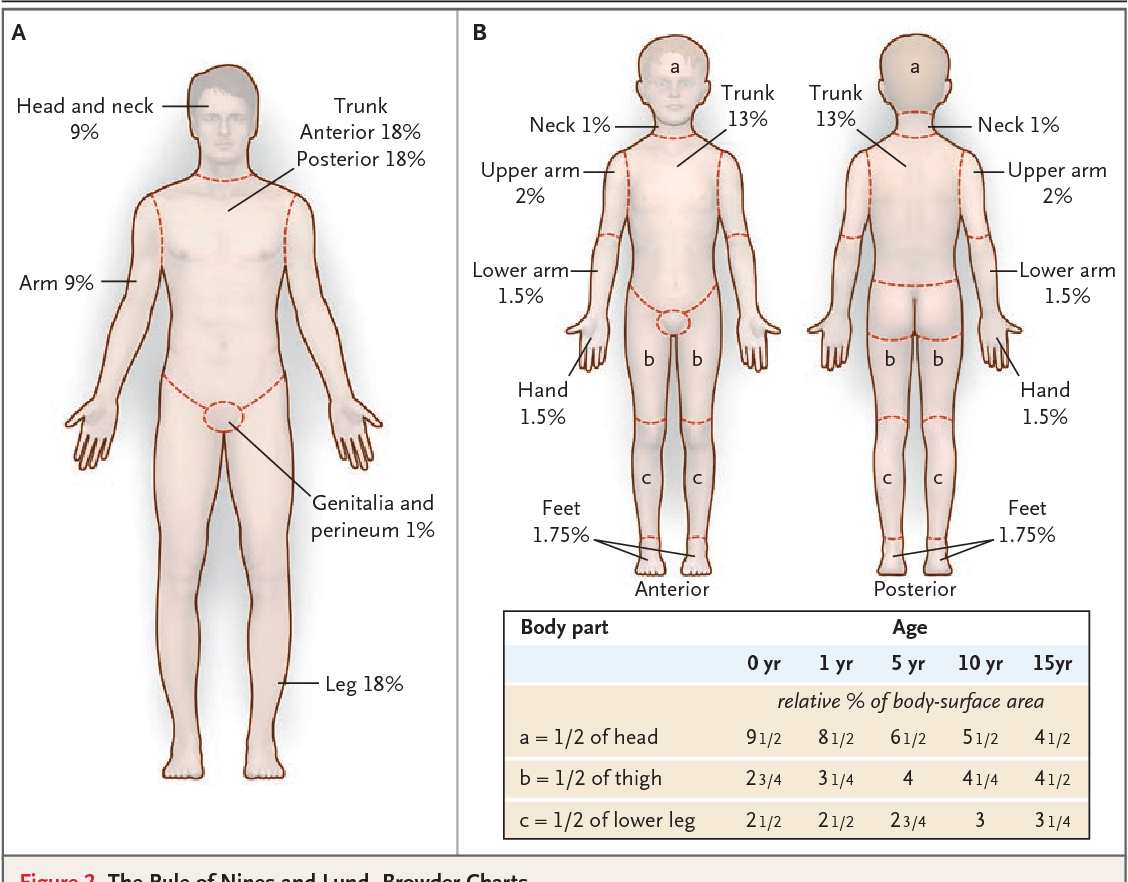 5% 5% |
| Posterior head | 4.5% |
| Anterior torso | 18% |
| Posterior torso | 18% |
| Anterior leg, each | 9% |
| Posterior leg, each | 9% |
| Anterior arm, each | 4.5% |
| Posterior arm, each | 4.5% |
| Genitalia, perineum | 1% |
| Adult – Obese 80 kg | |
| Anatomic Structure | Surface Area |
| Head and neck | 2% |
| Anterior torso | 25% |
| Posterior torso | 25% |
| Leg, each | 20% |
| Arm, each | 5% |
| Genitalia/perineum | 0% |
| Child | |
| Anatomic Structure | Surface Area |
| Anterior head | 9% |
| Posterior head | 9% |
| Anterior torso | 18% |
| Posterior torso | 18% |
| Anterior leg, each | 6.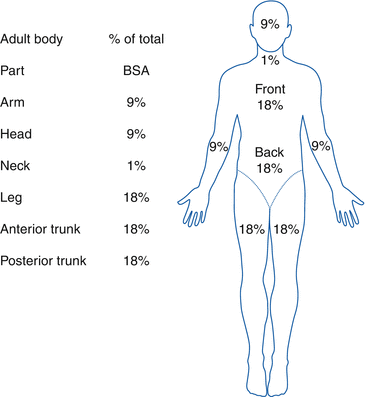 75% 75% |
| Posterior leg, each | 6.75% |
| Anterior arm, each | 4.5% |
| Posterior arm, each | 4.5% |
| Genitalia/perineum | 1% |
| Infant 10 kg | |
| Anatomic Structure | Surface Area |
| Head and neck | 20% |
| Anterior torso | 16% |
| Posterior torso | 16% |
| Leg, each | 16% |
| Arm, each | 8% |
| Genitalia/perineum | 1% |
Parkland Formula
For patients who require fluid resuscitation, consider use of the Parkland formula to calculate the volume of normal saline or lactated Ringer’s solution that should be administered intravenously to ensure hemodynamic stability.
Volume of Intravenous Fluid required in the first 24 hours (in mL) = (4 X patient weight in kg) X (Percentage of total body surface area burned)
The first half of the volume of fluid should be administered over the first 8 hours following the burn with the remaining fluid administered over the following 16 hours.
For pediatric patients, a weight-based assessment tool (length-based tape or other system) should be used to provide a more accurate estimate of the patient’s weight. Likewise, the total body surface area (BSA) estimates are different for pediatric patients compared to adults due to larger head and trunk size. For children, the palmar surface of the hand (not including the fingers is approximately equal to 1% BSA. The guidelines listed above will provide assistance during the estimation of the percentage of total body surface area burned for patients of various ages and body habitus.
Burn Injury IV Fluid Rates
Infusion Rate Weight > 30 KG
Infusion Rate Weight < 30 KG
Source: Used with permission, University of Utah Burn Center (https://crisisstandardsofcare.utah.edu).
Like this:
Like Loading…
Main
Font size:
A
A
A
Color scheme:
A
A
A
Regular version
Information
- Vacancies
- Details of the institution
- Composition of employees
- Patient’s rights
- Hospital stay rules 50 percent discount.

- Information about the standards of medical care
- List of vital drugs
- List of paid services
- Making an appointment with a doctor
- Processing personal data
- Decree of the Government of the Russian Federation No. 95 dated 20.02.2006 900 14
- Epidemiological Service
Health Development Program
- Territorial program of state guarantees for 2022-2024
Supervisory organizations
- Ministry of Health of the Karachay-Cherkess Republic
- Territorial Compulsory Medical Insurance Fund for the KChR
- Department of Roszdravnadzor
- Insurance company ZAO MAKS-M
For residents of the Karachay-Cherkess Republic added the possibility of another way to independently make an appointment with a doctor through the Telegram messenger . Telegram has implemented the @MedicineOnlineBot chatbot to make an appointment with medical institutions and call a doctor at home.
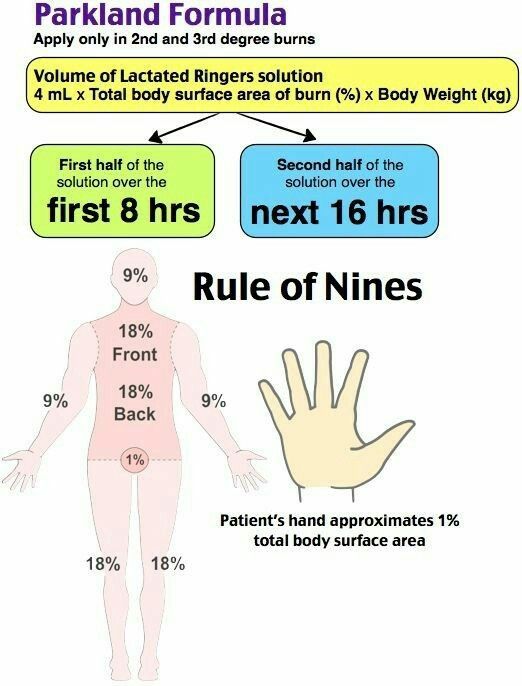 In the process of making an appointment, users can view a list of specialists of a medical organization, their work schedule. Recording for in-depth medical examination is also available for patients who have undergone COVID-19. Making an appointment and calling a doctor at home are carried out in several steps, user data (call address, contact information) is stored in the database to reduce the amount of information for repeated entries.
In the process of making an appointment, users can view a list of specialists of a medical organization, their work schedule. Recording for in-depth medical examination is also available for patients who have undergone COVID-19. Making an appointment and calling a doctor at home are carried out in several steps, user data (call address, contact information) is stored in the database to reduce the amount of information for repeated entries.
at the Consultative and Diagnostic Center of the Republican Children’s Multidisciplinary Hospital (at the address: Cherkessk, Griboyedova St., 81), children will be consulted by specialists (cardiac surgeon, arrhythmologist,) . Moscow.
Pre-registration is carried out by calling the reception:
8(8782) 25-01-27
April 20-21-22, 2023. in the Consultative and Diagnostic Center of the Republican Children’s Multidisciplinary Hospital (at the address: Cherkessk, Griboedov St.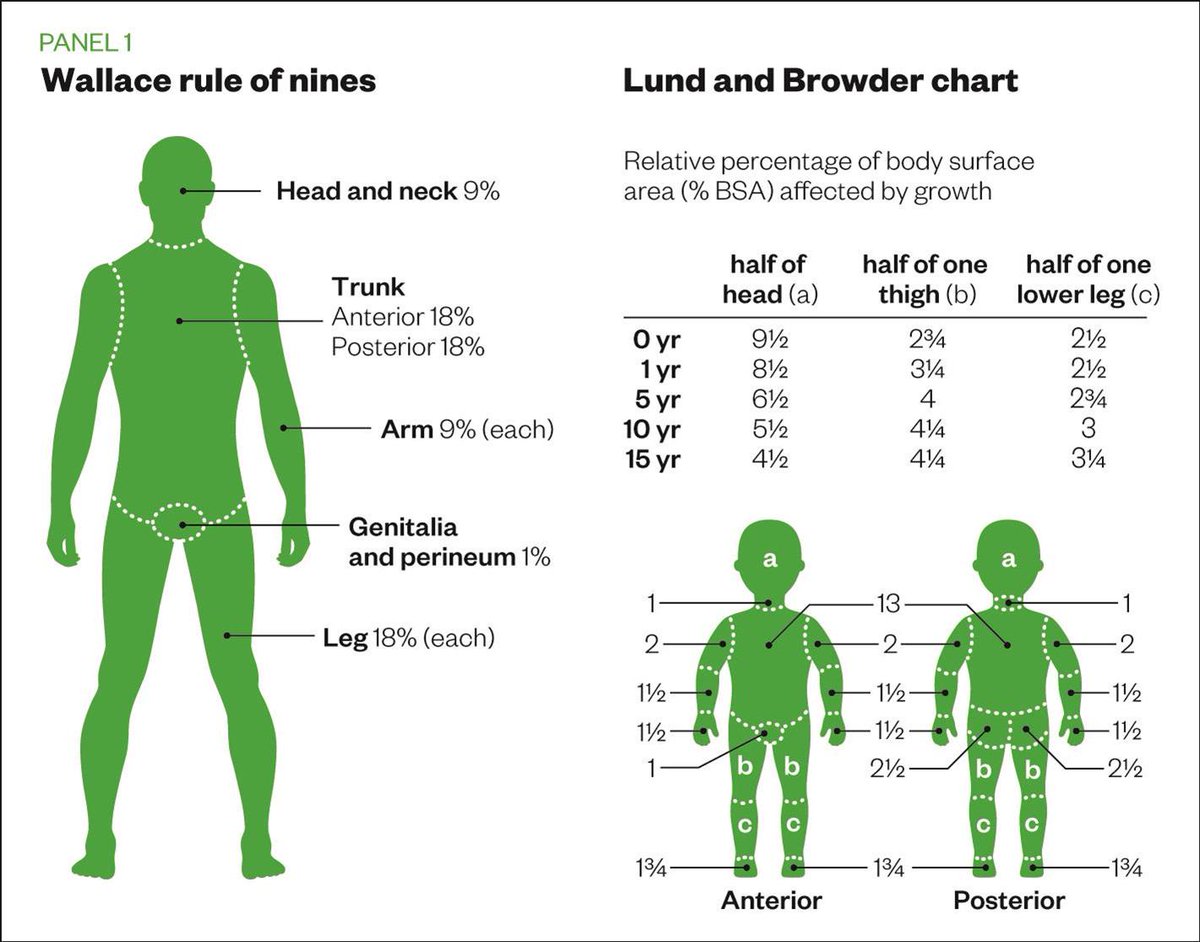 , 81), children will be consulted by specialists from the Research Institute named after. G.N. Turner, St. Petersburg.
, 81), children will be consulted by specialists from the Research Institute named after. G.N. Turner, St. Petersburg.
Specialists of the federal center:
Maxillofacial surgeon: Stepanova Yu.V.
Dear parents!
Children’s polyclinic in Cherkessk
received a vaccine against a new coronavirus infection Gam-Covid-VAK-M for vaccination of children from 12 to 18 years old. Registration for vaccination by phone: 250105. You can also contact the children’s clinic for vaccination. Vaccination is carried out after examining the child with thermometry and the informed written consent of the parent (guardian), or the child himself, who has reached the age of 15 years.
Chief freelance pediatrician of the Ministry of Health of Russia Alexander Baranov: If a child falls ill but goes to school, he will not be able to study normally, and he will infect others
— We are again in a whirlwind of infections, primarily respiratory infections. They strike thousands of our compatriots every day. Children are especially vulnerable,” he said.
They strike thousands of our compatriots every day. Children are especially vulnerable,” he said.
❕If a child starts sneezing, coughing, complains of feeling unwell, sore throat, you should not take him to school, it is better to stay at home so as not to infect other children and cope with the disease faster.
Very often parents send their children to school even if they have a temperature, even if it is small, because they are afraid to miss classes – the school program is very busy. If a child gets sick, but goes to school, he himself will not be able to study normally, and he will infect others. in children with respiratory infections, cognitive abilities deteriorate, especially cognitive functions decrease with a cold.
— I would like to appeal to the common sense of moms and dads. But it’s better to skip 2-3 days and treat an incipient cough or a reddened throat than to get seriously ill and, possibly, face complications after the illness, – said the chief freelance pediatrician of the Russian Ministry of Health.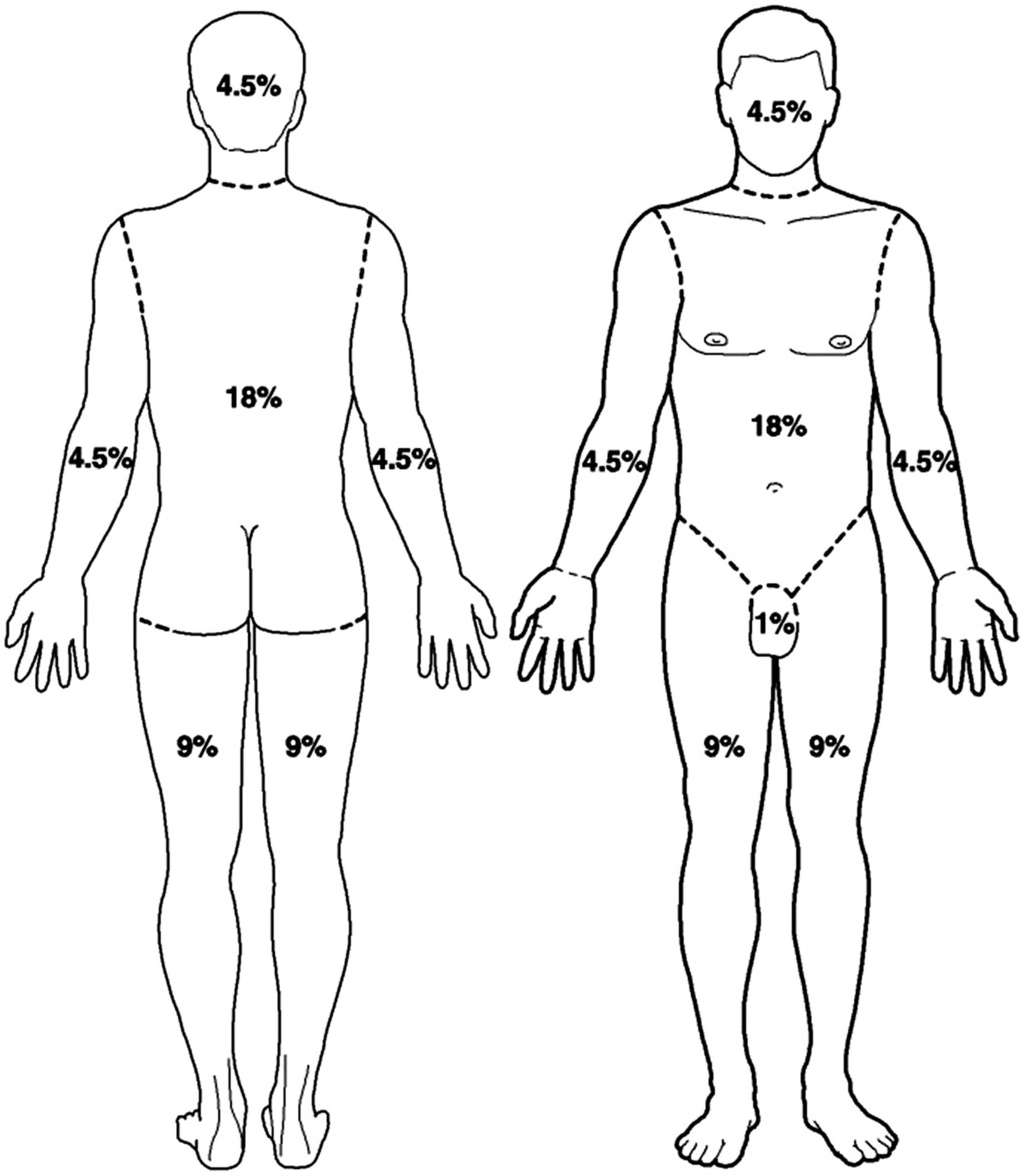
❌ It’s easier to send the child to school;
⭕️ It is wiser to stay at home, help you recover faster and return to learning.
If your family has not yet been vaccinated against influenza and pneumococcal disease, doctors advise getting vaccinated. This will help to avoid many health and learning problems.
Schedule of reception of citizens of the administration of the children’s hospital: Chief physician – Laipanova Tamara Akhmatovna Wednesday 12:00 – 14:00Tel:. 20-81-59cab. chief physician (administration)Deputy Chief Physician for Surgery Bakhtiyar Makseiovich Kalniyazov Monday from 10:00 – 12:00Friday from 10:00 – 12:00phone: 8-928-385-08-93Surgical building, 2nd floor, office deputy heads doctor.
Isabella Zalimovna Tlyabicheva Tuesday from 10:00 – 12:00Thursday from 10:00 – 12:00tel:. 26-12-40Room 507 |
Round-the-clock “Hotline” for receiving citizens’ appeals on all issues of medical care by phone: 8 (8782) 20-23-93 department with a department of emergency advisory medical care and medical evacuation (air ambulance): 8 (8782) 20-29-66; 20-35-81
Already today you can get an electronic prescription at the appointment of your doctor in RSBLPU “RDMB”. Install the My Prescription app by downloading it from the App Store, Google Play or the My-prescription.rf website. With the app, you can store all prescriptions, select medicines by active ingredient, information about availability and current prices in pharmacies of the city.
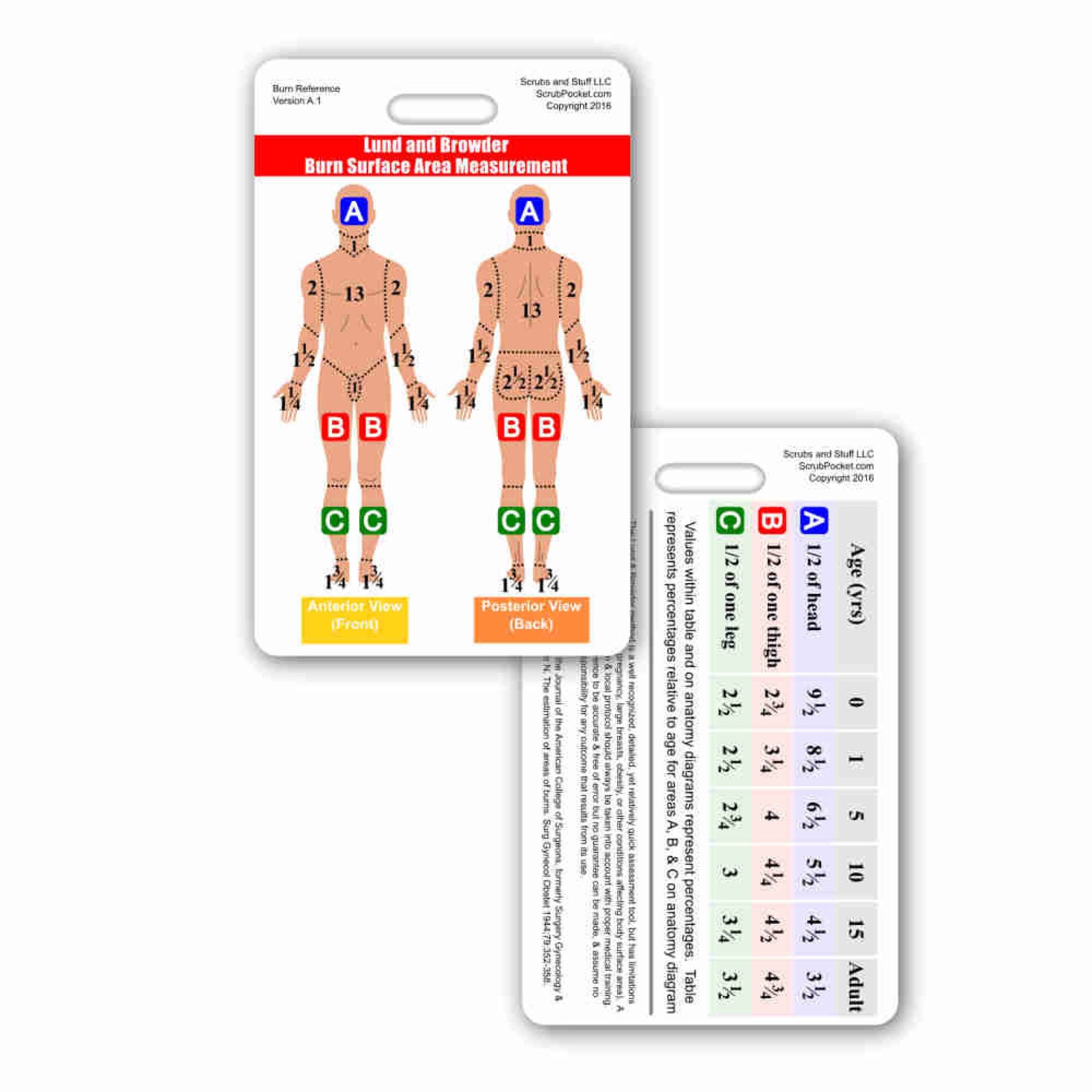 To buy a medicine at a pharmacy, you just need to show the QR code to the pharmacist. You can also add a profile of a relative or child in the My Prescription application through authorization on the Public Services. An electronic prescription is now more than just a prescription!
To buy a medicine at a pharmacy, you just need to show the QR code to the pharmacist. You can also add a profile of a relative or child in the My Prescription application through authorization on the Public Services. An electronic prescription is now more than just a prescription!
Licenses
Contacts
For feedback please contact by e-mail
RSBLPU “RDMB”: [email protected]
we ask you to inform the head physician of our institution, Laipanova Tamara Akhmatovna, about this
(with the exact indication of the full name of the doctor and types of studies) by e-mail. mail [email protected]
or by phone
RSBLPU “Republican Children’s Multidisciplinary Hospital” has 3 actual addresses:
Hospital – Cherkessk, st. Griboedova 77a
Polyclinic – Cherkessk, st. Krasnoarmeyskaya 68. – Umar-Aliyeva 12A.
Krasnoarmeyskaya 68. – Umar-Aliyeva 12A.
Teenage department – Cherkessk, st. Gagarina 24
do’s and don’ts, types and degrees of burns
Content:
What is a burn
Burn degrees
First aid for burns
Types of burns and features of first aid
Steamboiling water
Oil painting
Sunbeams
chemicals
electricity
hogweed
iron, hot object
What not to do when getting burns
What burns and how can be treated at home
How to relieve pain from a burn
In what cases you need to seek medical help
Burn Treatment Methods
medical devices
Pharmacy means
folk recipes
How long will it take to live
What is a burn
A burn is an injury to the body resulting from exposure to heat, chemicals, electric current, or radiation.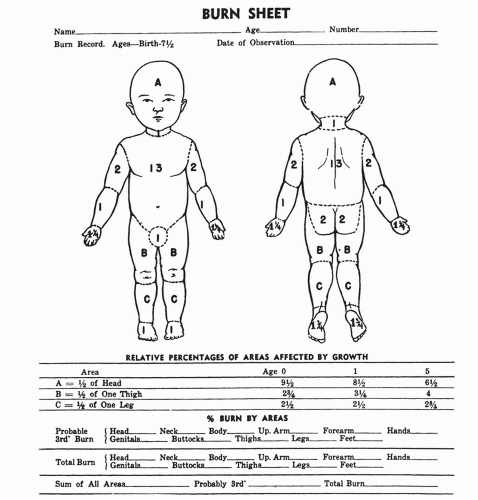 With such an injury, the skin and tissues under it are damaged and destroyed. Injuries occur at home and at work, so it does not hurt everyone to know about the rules for first aid for burns before the arrival of doctors. It is important to quickly navigate and know which remedies can be used for burns, and which are unacceptable. The right actions will slow down the destructive process, which will speed up the healing process.
With such an injury, the skin and tissues under it are damaged and destroyed. Injuries occur at home and at work, so it does not hurt everyone to know about the rules for first aid for burns before the arrival of doctors. It is important to quickly navigate and know which remedies can be used for burns, and which are unacceptable. The right actions will slow down the destructive process, which will speed up the healing process.
Burn degrees
The choice of what to do for a burn will depend on the extent of the injury. There are four degrees of severity of burns:
- I degree – superficial damage to the epidermis and dermis;
- II degree – borderline burns, when the skin is deeply affected, but the sebaceous and sweat glands, hair follicles are not damaged;
- III degree – deep lesions with complete skin lesions (necrosis), often with spread to subcutaneous fatty tissue, muscle and bone tissue;
- IV degree – necrosis of the skin, muscles and tendons, down to the bones.
 Destroyed tissue melts and is gradually torn away over several weeks. The healing process is very long.
Destroyed tissue melts and is gradually torn away over several weeks. The healing process is very long.
The following table shows the correlation of the classification of burn degrees according to ICD-10 with the classification of the XXVII Congress of Surgeons of the USSR in 1960.
| Characteristic | Classification of the XXVII Congress of Surgeons of the USSR | ICD-10 classification | Burn depth |
| Skin hyperemia | І degree | І degree | Superficial burn |
| Blistering | II degree | ||
| Partial skin necrosis | III-A degree | II degree | |
| Complete skin necrosis | III-B degree | III degree | deep burn |
| Necrosis of the skin and underlying tissues | IV degree |
The severity of a burn wound is characterized by its depth and area. The first depends on the duration and temperature of the aggressive impact, as well as the timeliness of providing assistance to the victim.
The first depends on the duration and temperature of the aggressive impact, as well as the timeliness of providing assistance to the victim.
When a person with severe burns is admitted to the hospital, doctors evaluate the damaged area according to the “Rule of nines”, dividing the body into zones, each of which is equal to 9 in percentage terms, respectively:
- head and neck -9%;
- each hand – 9%;
- each leg – 18%;
- front + back torso – 36%;
- and the perineum accounts for the remaining 1%.
First aid for burns
First aid for burns to a person must be provided as soon as possible, already at the scene. First of all, it is important to stop the action of an aggressive agent, if possible, remove clothing and jewelry from the affected area. It is strictly not allowed to remove and pierce blisters, forcibly separate foreign bodies adhering to the skin (splashes of molten metal and plastic, fragments of clothing, etc.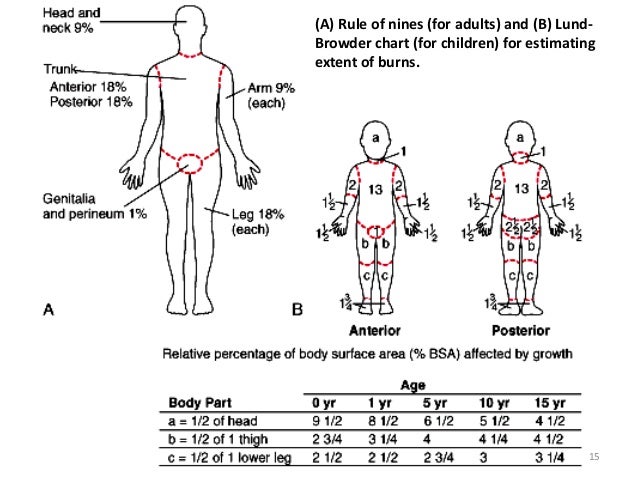 ).
).
During the first 10-15 minutes, cool the damaged skin with running cold water. This will prevent the burn from deepening. In addition, cooling reduces pain and swelling. The victim is given an anesthetic and an antihistamine. Before the arrival of emergency help, he needs to drink non-carbonated mineral water or ordinary, with 1 tsp previously dissolved in it. salt and 0.5 tsp. soda per 1 liter of water.
Types of burns and first aid
Depending on what caused the burn, the steps to provide first aid for burns will differ.
Boiling water steamer
With a small but deep injury, you need to place the burned area under running cold water for 10 minutes and call a doctor. Do not use ointments or other external agents.
Oiled
Usually these are small but deep burns (I-II degrees). Cool the damaged area under a tap with cold water, wait for the doctor to determine the depth and extent of the lesion. There is no need to treat burns of this type.
Sunlight
These are usually 1st degree burns, very rarely 2nd degree burns. Act similarly to the first two points: cool with water for 10 minutes, drink an antihistamine to avoid swelling and painkillers. Do not use ointments and traditional methods of treatment.
Chemicals
Remove the chemical agent from the skin, remove interfering clothing. Rinse under tap for 10 minutes. It is not recommended to wipe with wet wipes, it is forbidden to use ointments and homemade recipes without consulting a doctor. Currently, antidotes are not used to treat such burns.
Electricity
Traces remain at the points of entry and exit of electric current from the body. The burns are small but very deep. First, the current source is de-energized, then immediately turn to a specialist. Damage cannot be repaired.
Hogweed
A plant with caustic sap causes burns of the first or second degree, resembling damage from chemicals. The juice of the plant should be removed from the skin, rinsed under a tap, do not smear the injury site with anything and consult a doctor.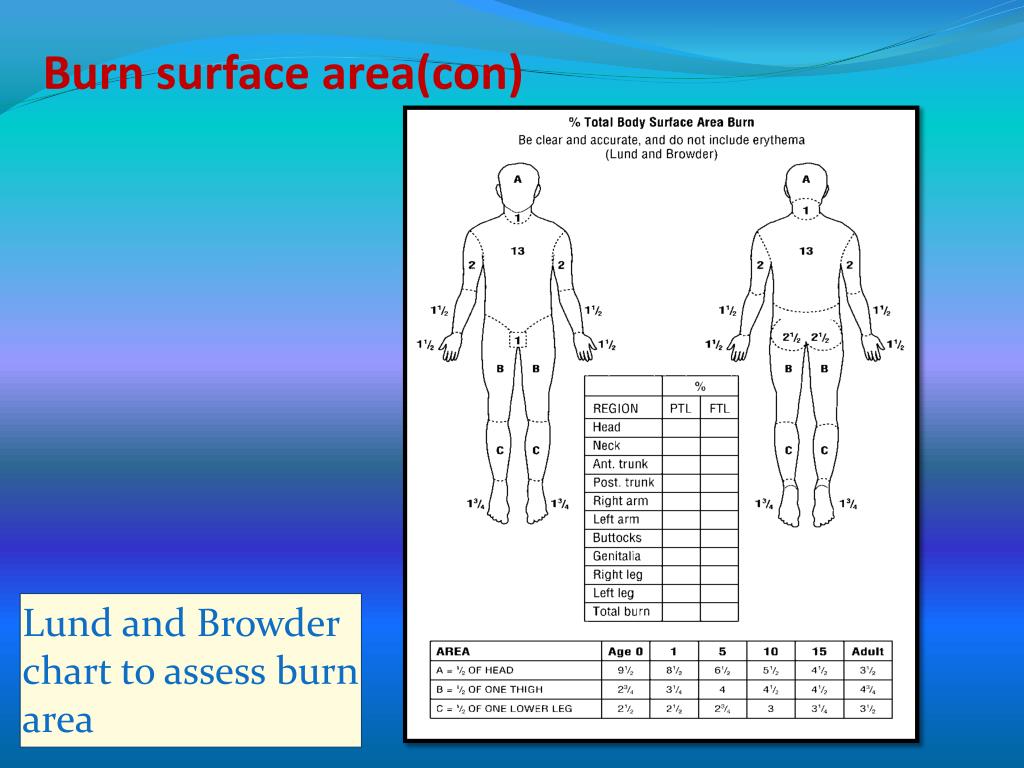
Iron, hot object
Usually these are thermal burns of the II-IV degree. Place the damaged area under running cold water for 10 minutes, apply a dry bandage. It is forbidden to apply ointments, apply ice, use folk remedies.
In each of the above cases, it is recommended as an effective first aid to apply a Branolind dressing to the burn site, and on top of it – a Medicomp non-woven napkin, followed by fixation with a Peha-haft bandage.
Definitely not to do if you get burned
Trying to provide first aid for a burn, out of ignorance, some aggravate the nature of the damage and harm the victim. Doctors strongly advise against doing the following:
- smear the damaged area with fat, as the resulting film will not allow the wound to cool;
- remove clothing stuck to the burn;
- treat the wound with baking soda or vinegar;
- lubricate the burned area with iodine, brilliant green, alcohol-containing compounds;
- apply ice as this will cause vasoconstriction and impair blood flow;
- apply ointments from burns before cooling tissues;
- puncture blisters that form;
- dress the wound with plaster;
- give the victim alcoholic drinks, strong coffee and tea.

What kind of burns and how can be treated at home
Burns of any degree are treated only by a doctor! At home, it is only allowed to provide first aid for first-degree skin burns. We are talking about situations where the area of the wound is not more than 5 percent, while the genitals and head are not affected.
If you list all the procedures briefly, first aid for burns at home consists of the following steps:
- Cooling the damaged area with water.
- Branolind dressing.
- Over the dressing, the imposition of a non-woven cloth Medicomp.
- Fixation of the lesion site with Peha-Haft bandage.
It should be remembered that only a doctor can determine the severity of the lesion and say exactly how to treat burns at home. If necessary, the victim is hospitalized.
How to relieve the pain of a burn
Since no one is safe from the danger of getting burned, it is necessary to clearly understand what to do with a burn and what first aid to provide. Actions to provide first aid will depend on the causes of the burn.
Actions to provide first aid will depend on the causes of the burn.
As a first aid for burns that cause severe pain, you can give him a painkiller tablet to alleviate the suffering of the patient. For minor injuries, accompanied only by reddening of the skin or the formation of small transparent bubbles no larger than 5 cm in diameter, it is recommended to cool the injured area by placing it under running cold water for 10 minutes to prevent damage to deeper tissues. After cooling the affected tissues, the necessary first aid should be provided by treating the burn site with a special agent. It is also advisable to consult a general practitioner to get professional advice on treatment methods that contribute to the rapid healing of the burn.
In more severe cases, medical help should be sought as soon as possible, since delay is fraught with serious complications for the body, up to a threat to the life of the victim.
When to seek medical help
Immediate treatment for first aid for burns is required in the following cases:
- a child or an elderly person has been injured;
- for burns of the face, respiratory tract, inguinal region;
- first-degree burns, if the affected area is large enough – more than 10% of the body;
- with the second degree of damage, if the injured area occupies about 1% of the body surface;
- third and fourth degree burns;
- for burns that have a chemical or electrical cause;
- if it is impossible to relieve pain;
- when the wound is contaminated with earth;
- in any case if the patient has lost consciousness;
- with fever and general malaise.

For the treatment of severe burns of severe degrees, the victim should be placed in the burn unit. It is necessary to stop the pain shock in a short time and prevent the occurrence of complications.
First of all, it must be remembered that even mild burns can be deadly if a large surface area of the body is affected.
Burn treatments
Medical devices
Medical care in the treatment of burns is aimed at restoring the affected tissues. In order to relieve pain and speed up the regeneration process, special tools are used. It should be remembered that when providing first aid for a burn, it is important for the victim to thoroughly disinfect their hands first. To do this, you can use the antiseptic for hands “Sterillum”.
After that, the burn site should be covered with a wound-healing antiseptic dressing “Branolind N” with Peruvian balsam. It has a large-celled structure, into which the discharge from the wound is well absorbed, and Peruvian balm will accelerate healing. The bandage can be on the wound for up to three days, which means that the dressings will not cause much concern to the victim. For reliable and careful fixation of the dressing on the wound, a sterile plaster with a soft absorbent vapor-permeable pad “Cosmopor E” is used. It is attached to the body thanks to hypoallergenic glue and reliably protects the injury site from pollution and mechanical stress.
The bandage can be on the wound for up to three days, which means that the dressings will not cause much concern to the victim. For reliable and careful fixation of the dressing on the wound, a sterile plaster with a soft absorbent vapor-permeable pad “Cosmopor E” is used. It is attached to the body thanks to hypoallergenic glue and reliably protects the injury site from pollution and mechanical stress.
To provide first aid for burns in case of minor injuries, the bandage can also be fixed with a transparent adhesive bandage “Hydrofilm plus”. Its absorbent pad does not stick to the wound. The transparent polyurethane film has water-repellent properties, which means that the bandage will not peel off even during a shower.
To fix the absorbent bandage in the area of the joint or on other rounded parts of the body, a self-locking bandage “Peha-Haft” is used. It does not hinder movement, it is firmly held on the body. Only 1.5-2 turns of the bandage are enough to fix the bandage. The dressing does not stick to the skin and hair, completely hypoallergenic (latex-free). When fixing with a bandage: Branolind N is applied to the wound from above with a sterile absorbent dressing (Medicomp) and then fixed with a Peha-Haft bandage.
The dressing does not stick to the skin and hair, completely hypoallergenic (latex-free). When fixing with a bandage: Branolind N is applied to the wound from above with a sterile absorbent dressing (Medicomp) and then fixed with a Peha-Haft bandage.
Pharmacy products
If the means described above are not at hand, the question arises: how to treat a burn at home? To provide first aid for burns, you can use the tools that are almost always in the home first aid kit: sterile wipes (“Medicomp”), diluted to a concentration of less than 1% with hydrogen peroxide, furacilin, miramistin. A gauze pad can be soaked with hydrogen peroxide solution, which is applied to the wound for a short time. Furacilin has disinfecting properties and can be used to cleanse the wound before applying the anti-burn agent. Be sure to check with your doctor before using any remedy.
Folk recipes
There is an opinion that first-degree burns do not require any treatment, and to treat the affected area, you can use improvised means, for example, treat the skin with oil and sour cream.

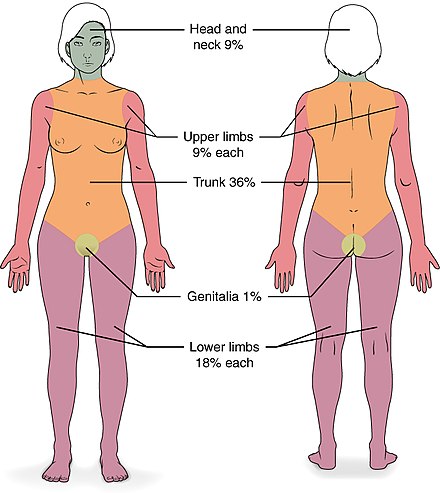

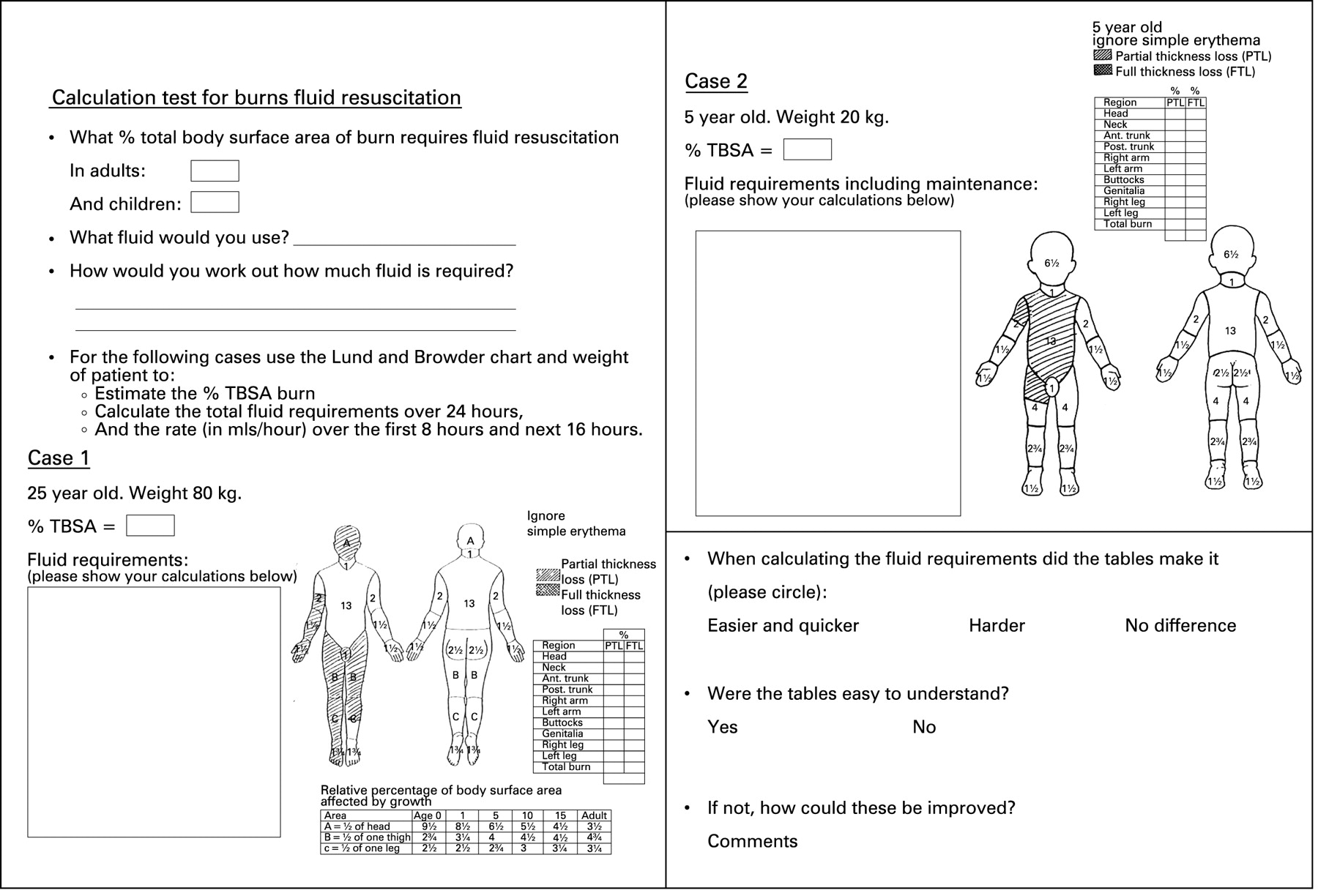 Destroyed tissue melts and is gradually torn away over several weeks. The healing process is very long.
Destroyed tissue melts and is gradually torn away over several weeks. The healing process is very long.
